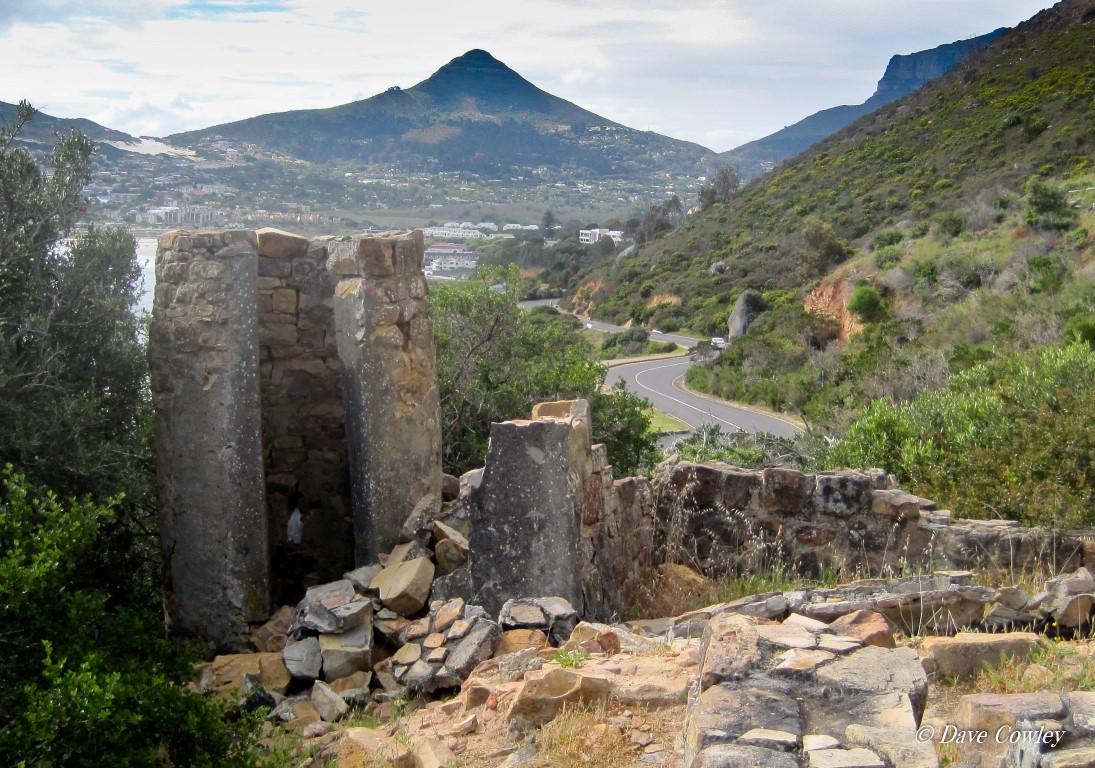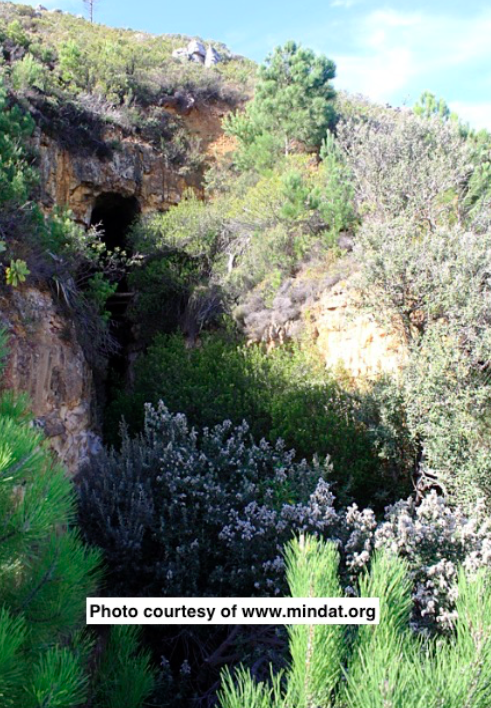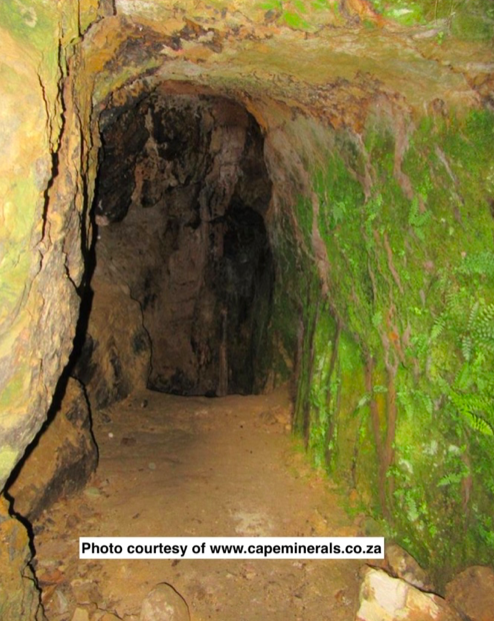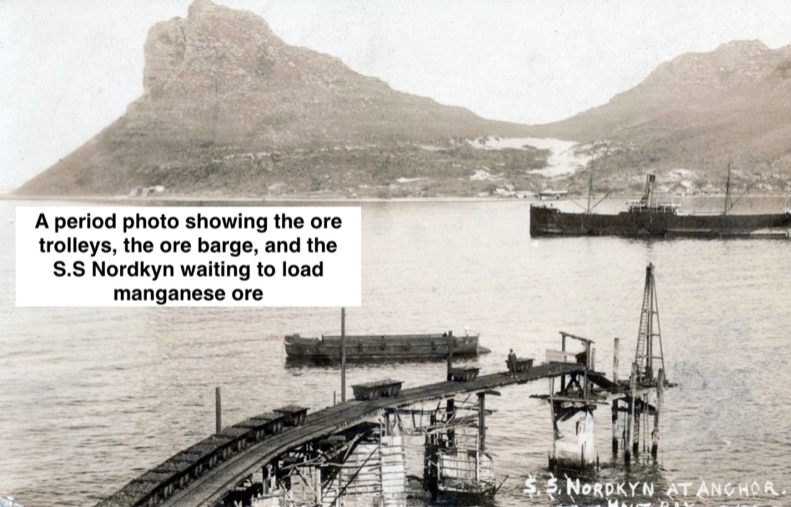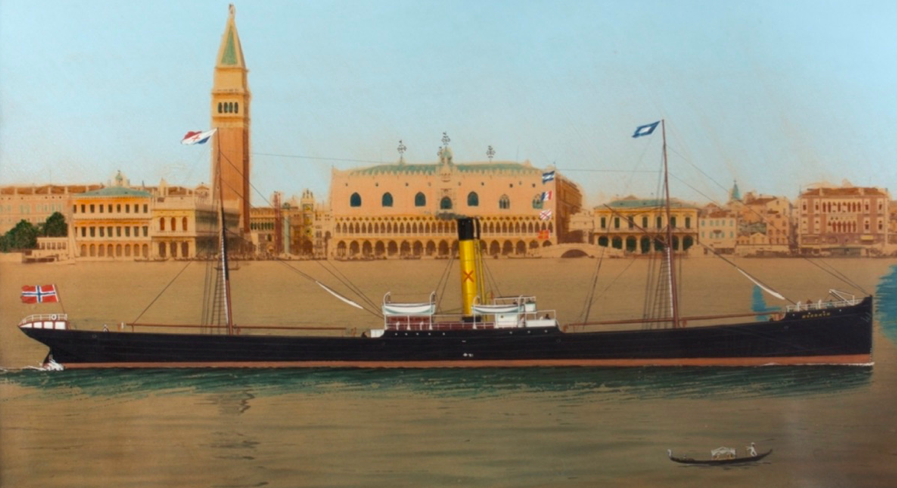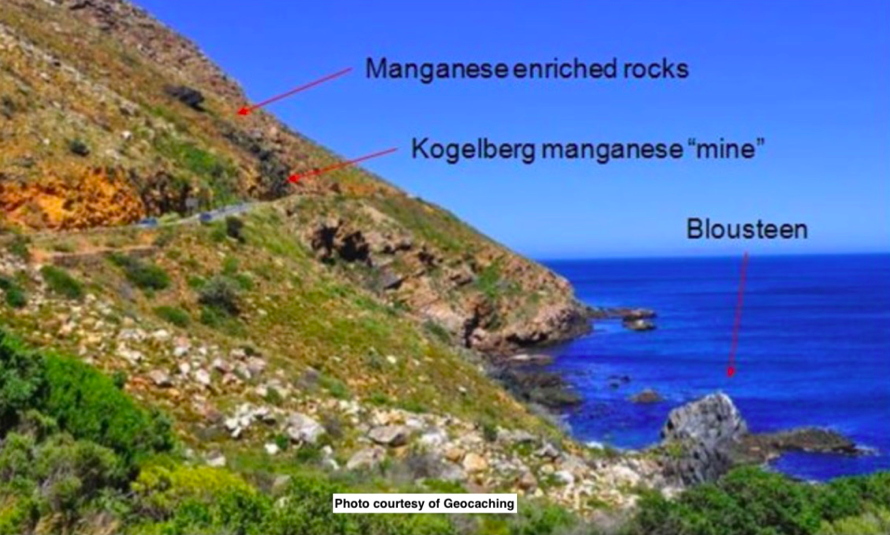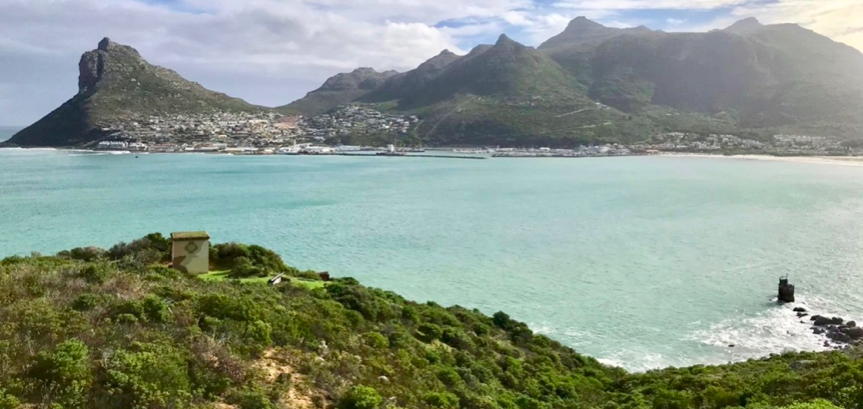
Disclaimer: Any views expressed by individuals and organisations are their own and do not in any way represent the views of The Heritage Portal. If you find any mistakes or historical inaccuracies, please contact the editor.
Exploitable manganese deposits in the Cape Peninsular were known from around the late 1670s, and indeed many of our hikes pass on or close by manganese deposits of one kind or another.
Hike Kasteelpoort or Skeleton Gorge and you will walk over the stuff. At Mont Rochelle the link trail from Uitkyk to the summit of Dutoitskop is known as The Manganese Trail.
Hike from Hout Bay East Fort and you will pass close by the old workings. Hike at Silvermine and take in the Noordhoek peak circuit, and you will be able to see far below you the stumps of the old manganese pier marked on Slingsby’s Silvermine map Jetty 1909. Slingsby…..accurate as usual.
East Fort (Dave Cowley)
If you hike around Kogelbai in the area of the camp site and tidal swim pool you will be next to out-crops of manganese. Whilst on towards Rooiels you will drive past old mine workings with even knowing it.
Manganese has many useful properties, and as such is a much sought after commodity.
The vast majority of manganese locations are superficial staining of rock outcrops, however in two locations, Rooiels and Hout Bay, there existed deep vein deposits of high enough grade manganese which lent themselves to artisinal (small scale) mining.
It was only by 1909 that the difficulties surrounding mining had been overcome, and ore began to be shipped to Belgium. Another company called Hout Bay Manganese Ltd. took over the operations in 1910 and mined the deposit from May 1910 to May 1911. For three short years the export continued but due to the variable nature of the ore, and its phosphorus content, mining was discontinued in 1912.
An attempt was made to reopen the Hout Bay mine in 1929, just before the Wall Street crash. However, plunging commodity prices drove the project into the ground before it could begin.
The Hout Bay mine is located on the slopes of the mountain just above Chapman’s Peak Drive. The shafts are accessible by a steep uphill bundabash, but care is needed as many of the shafts are in a dangerous crumbling state, and some deep holes are hidden by undergrowth. One larger adit (horizontal mine working) may be explored for some 30m, though it is home to large spiders and other wildlife. They are very Covid conscious and are not socially welcoming.
Two views of the abandoned Hout Bay Manganese adits
A long ore shute was constructed extending 700 meters from the mine down to the cliff below. After the ore had slid down the chute from the mine to a collection point, it would be transferred to cocopans (similar to small mining trolleys) that took it to the jetty end where it was loaded into flat bottomed lighters (ore barges) which carried the ore out to the waiting ships for transporting to Belgium.
Loading manganese at the jetty
There is an unverified story that on one occasion, ore exiting at high speed from shute went right through the bottom of a lighter, sinking it. Certainly, control of the sliding ore and the cost of continual maintenance of the shute was one of the determining factors in the mines closure. It is more likely that a cocopan overloaded, crashed down into the barge and sank it. Two pillars of the ore jetty are still visible just offshore at the start of Chapman’s Peak (see bottom right of main image).
In the background, where Hout Bay Harbour is situated today one can just make out the hulk of the R. Morrow. She was condemned in 1904 and became Hout Bay’s first fish-canning factory. She stood where the present SA Sea Products factory stands today. For almost a decade she operated successfully; however, the factory blew up due to an acetylene gas leak on 31 July 1914, killing seven people including the owner Lucien Plessis.
The SS Nordkyn has an interesting history. Built in 1895 by Ropner & Son in Stockton, and owned at the time of her loss by A/S D/S Nordkyn (Alb. (Harloff), Bergen. She was a typical steamer cargo vessel for hire, and on the 12th March 1918, whilst en route from Philadelphia to Gibraltar with 4,180 tons of wheat, she was captured by the German submarine U 154 and scuttled with explosive charges. The crew were allowed to disembark into three lifeboats, and all made it to Morocco. By another twist, the captain at that time was Albert John Moss, who had already survived the sinking of the Titanic.
The S. S. Nordkyn in happier times outside Venice – complete with gondolier on the lower right (Bergen Museum)
It was thought at one time that the manganese deposits at Rooiels might be viable. In 1930 an experimental shaft was cut into the mountain side, and construction was begun on a small jetty on the coast below. However, the ore grade was found to be uneconomic. Added to this disincentive was the fact that landowners did not have mineral rights. Transportation was also a major issue, as all heavy equipment had to be carried round via Houw Hoek pass, or by sea. Up to World War II just a footpath existed from Steenbraas river to Rooiels. It was only in 1942 that Jack Clarence, a Rooiels landowner, aided by Italian prisoners of war, built the road that we now drive and enjoy, and know it as Clarence Drive.
On the last rise, just before you drop down to Rooiels, look out for some dark rocks and an old tunnel on the hillside above you, and the ruin of a small jetty on the rocky shore below you.
Site of the Kogelberg Manganese Mine (Geocaching)
There is talk of manganese deposits and possible workings near Gordons Bay, but at the time of writing the author has not been able to trace information regarding the Gordons Bay workings. It is said that Boer prisoners of war working the Gordons Bay site.
If anyone has any information on these workings please email Steve - slioch980@gmail.com
The author is indebted to the following references, without which the compiling of this article would not have been possible:
References:
- Bergen Museum
- Masters Thesis by Duncan Graeme MacGregor, UCT
- Mindat.org
- Jan Lettens & Lockett Graham
- Michael Fortune - FB site ‘Cape of Diab’
- Patrick Atwood – One-time resident of Hout Bay. Now New Zealand
- Geocaching
- Passes & Poorts: Clarence Drive
- Manganese – Cape Town’s hidden secret
- Rooiels - A history and other stories. By Rita Blake
Comments will load below. If for any reason none appear click here for some troubleshooting tips. If you would like to post a comment and need instructions click here.

